Last month, I attended the 2023 International Making Cities Livable conference as a speaker and presented a paper titled “Public Understanding and Adoption of Ecological Placemaking Principles through Simulation and Gaming.”
The conference was hosted in Dorchester and Poundbury in the UK. The subject of the conference was more generalized urban ecology but was specifically on the subject of Poundbury.
I went on two different guided tours of Poundbury. I’ve always wanted to see it as a reputed new urbanist settlement in the leagues of Seaside, Celebration, or Kentlands. I’d also heard that in the UK, people either loved or hated it, and it’s received a lot of criticism.
Here, I’d like to give my impressions.
This is Poundbury on Google Maps.
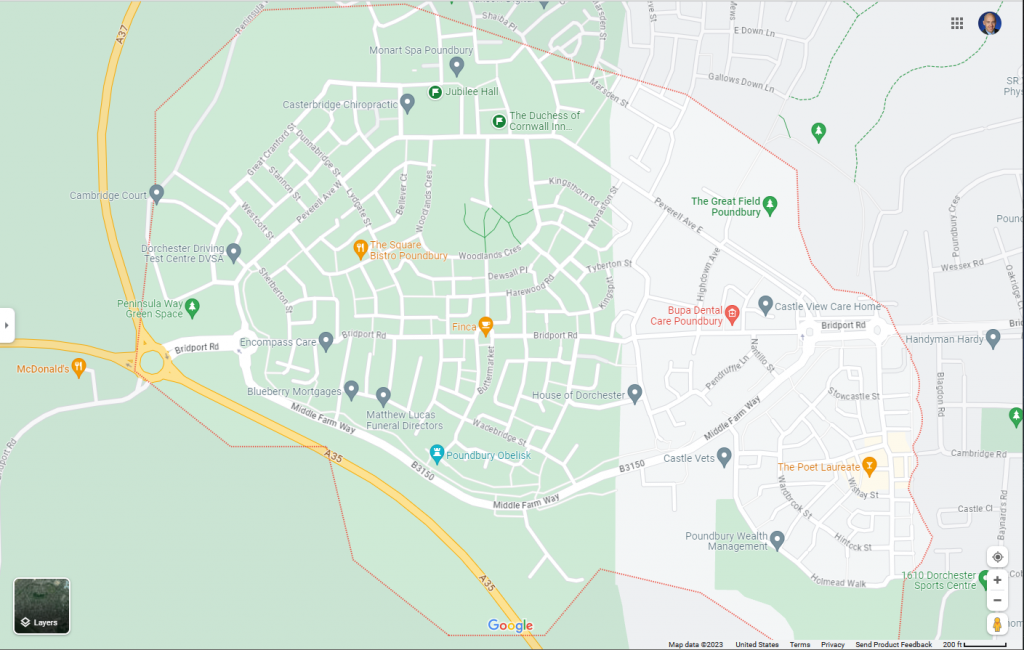
From the map, it appears fairly compact with walkable density. I found that to be the case on the tours – it was easy and interesting to walk from one end to the other in an hour or so.
My overall impression is that it is human-scaled with lots of traditional architectural features. Walking there was much more pleasant than walking in typical US-based suburbia without question.
A lot of effort went into the aesthetics. Parks were thought through, though I didn’t observe much use of them. Maybe in better weather.
A resident explained that Dorset (where we were) is the county and carries a higher premium as being more desirable for retirees and to be out, away from the city. Dorchester is more expensive within Dorset, and Poundbury is more expensive within Dorchester. Hence, the sentiment I heard was that Poundbury was only for rich people.
The areas I felt were lacking were that it still felt automobile-centric, poorly lived-in, missing essential amenities, and poorly organized regarding commercial development.
Parking lots were prominent, and roads were wide and low-quality asphalt. This was a typical road. Aside from the single car, you wouldn’t know that people actually live here and own it. It felt more like an apartment complex where no one was allowed to decorate.
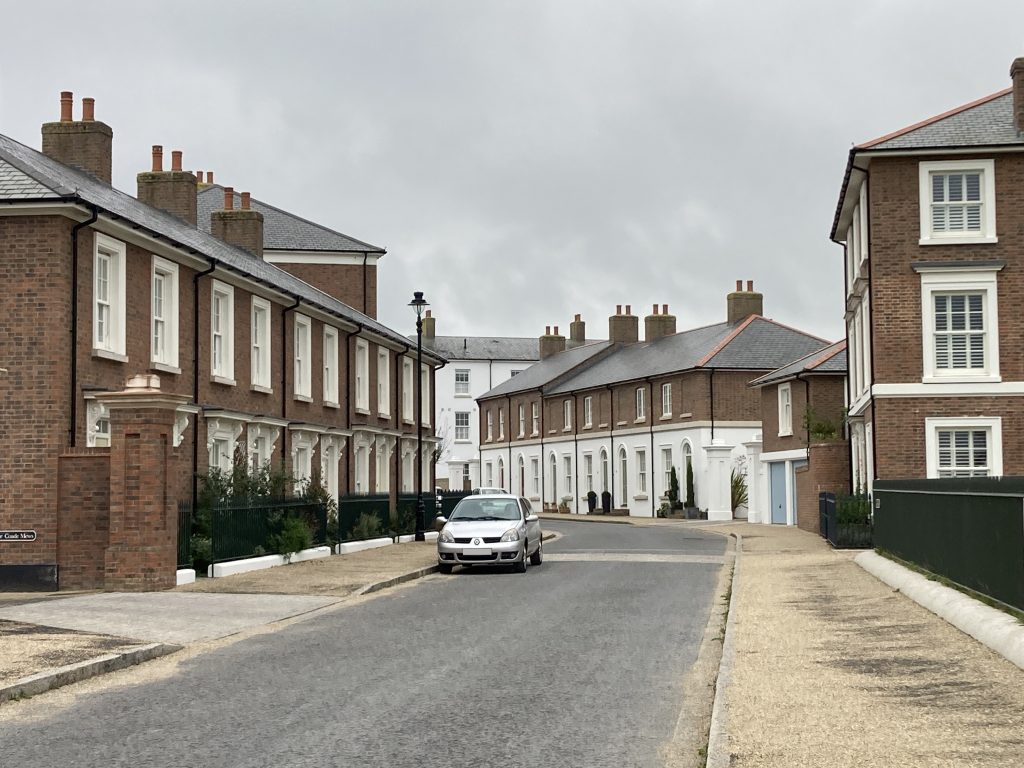
This is the development’s main focal point: The Queen Mother Square. As far as I saw, these were the tallest structures in the town. You’ll also notice the main activity here is a parking lot. The square hosts a grocery store, a restaurant/inn, various other offices, and a few retail uses like a spa and butcher shop. I asked and was told that they have a farmer’s market once a month. I would say it needs to be weekly to be a viable source of social activity.
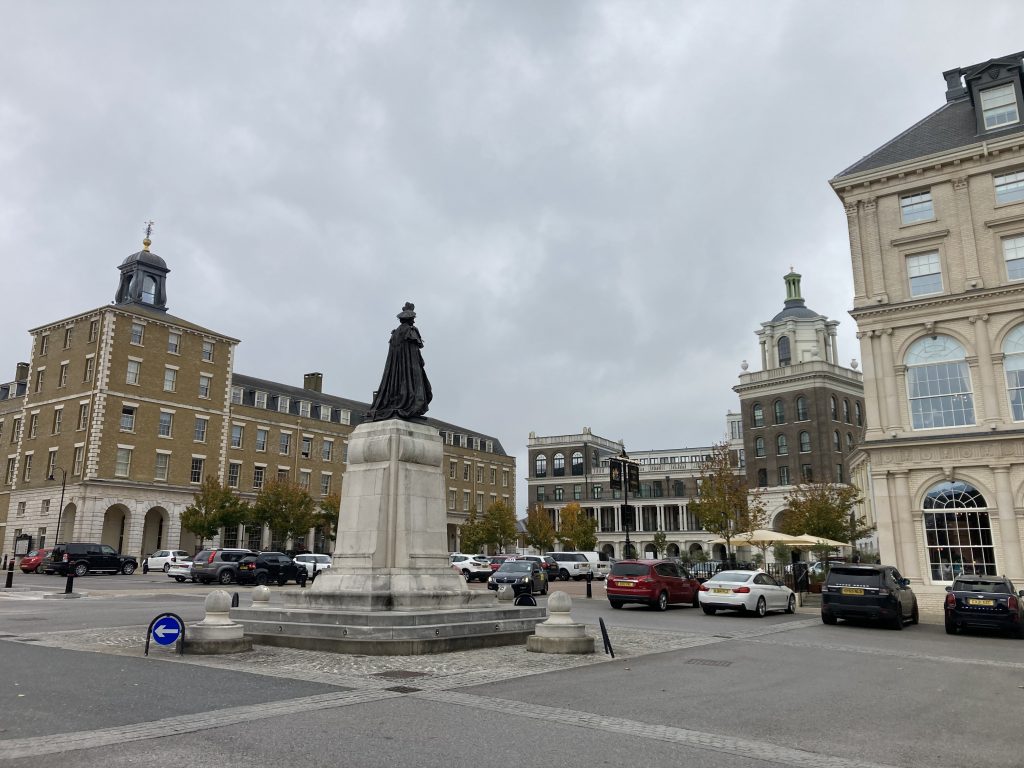
There aren’t retail centers exactly, and most of the shops are not very well signed. There’s not a specific place to go if you want to go shopping.
There were some nice places hidden here or there that you probably wouldn’t find without knowing about them. This restaurant/coffee shop was one of them. It had plenty of parking and outdoor seating around the corner.
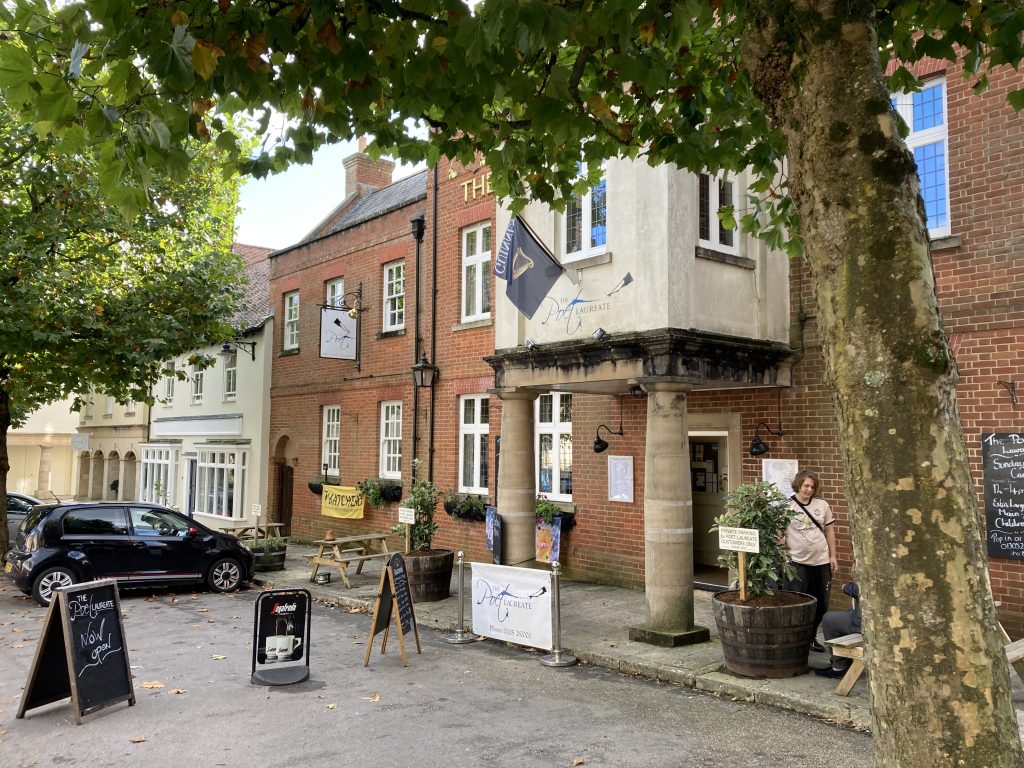
This was the other main square – also a large parking lot.
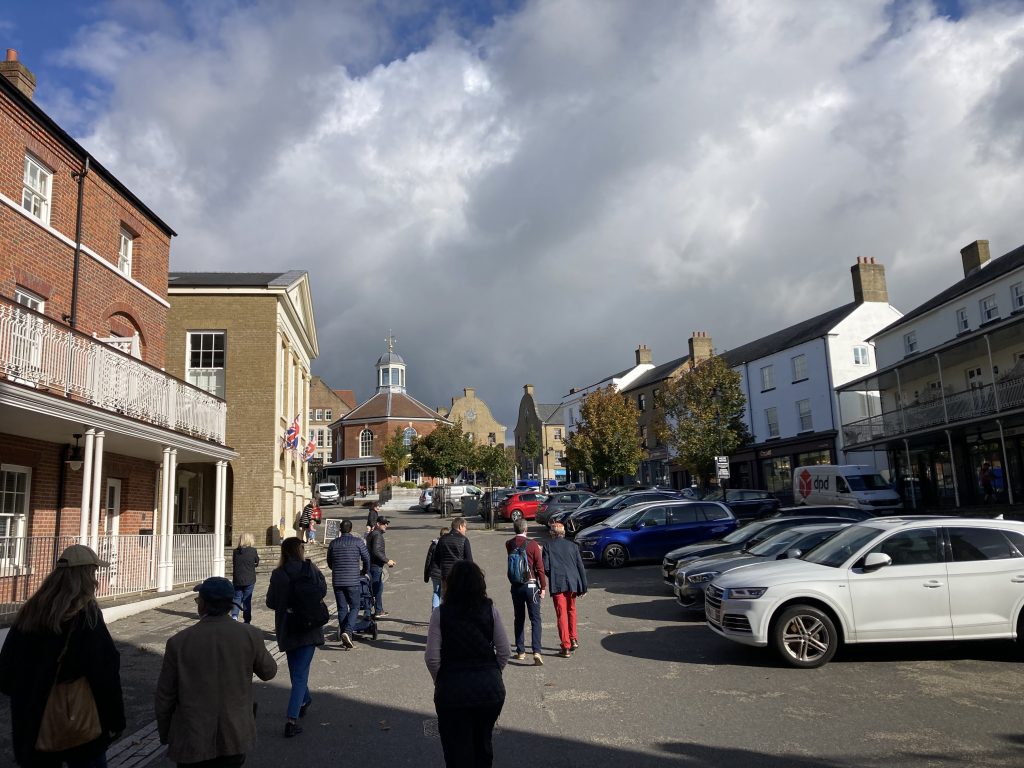
There was some seating area at the top. The view might have been nice, except you mostly look at a parking lot.
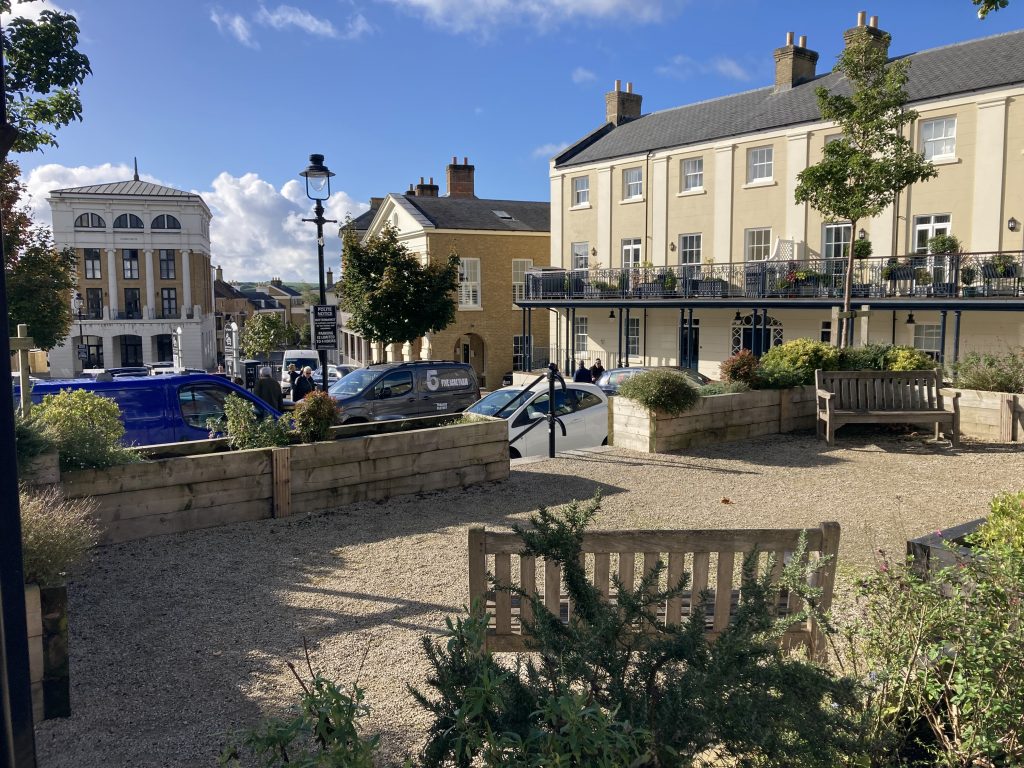
Down the street from there was a nice fountain with few people out on a Saturday afternoon (and another parking lot).
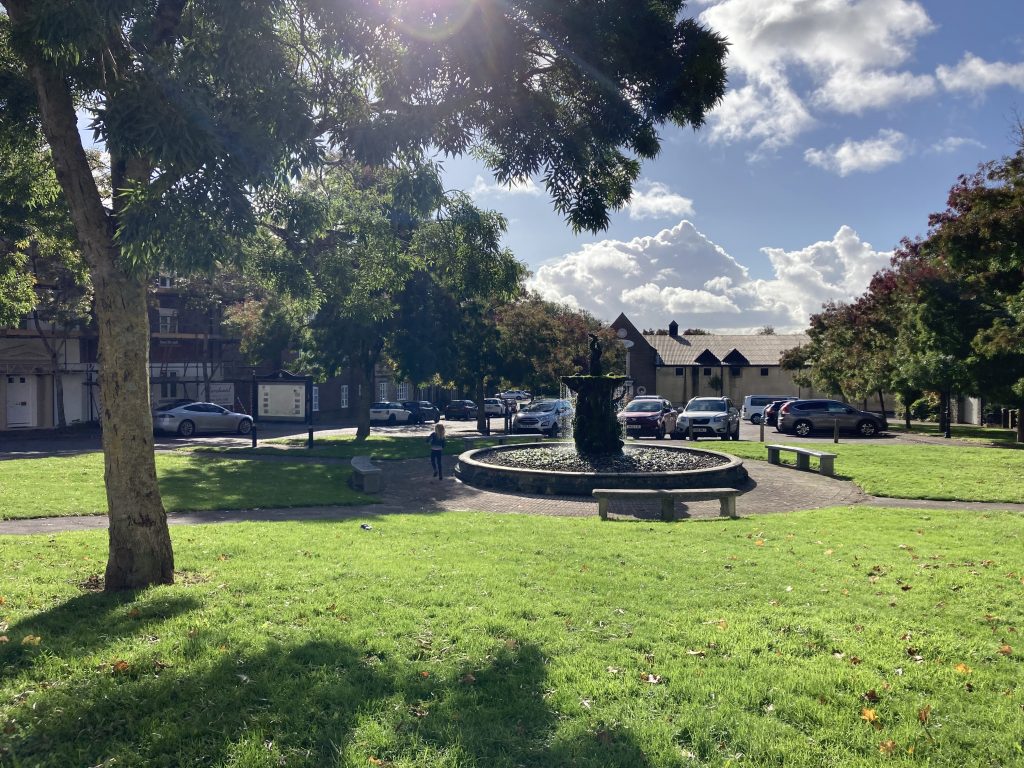
Comparing Dorchester, where I stayed with Poundbury, I have to say I liked Dorchester better.
This was a retail pedestrian street in Dorchester. Although more of the shops were closed than I had hoped, it was still alive and bustling.
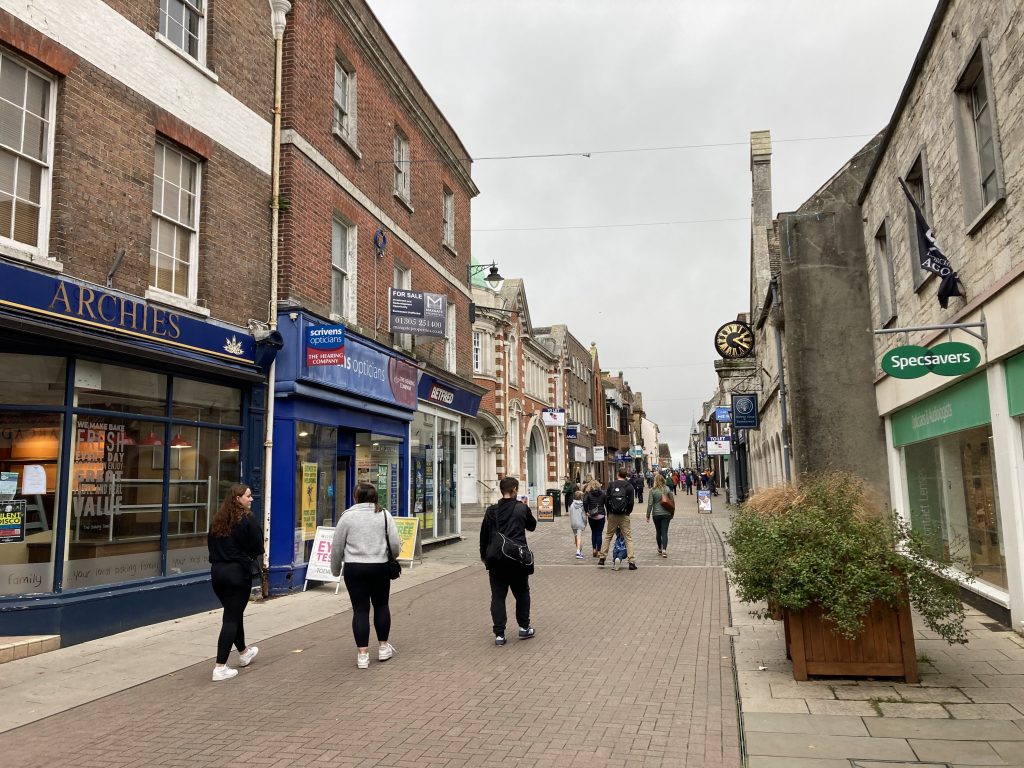
A stream-side walking path in Dorchester.
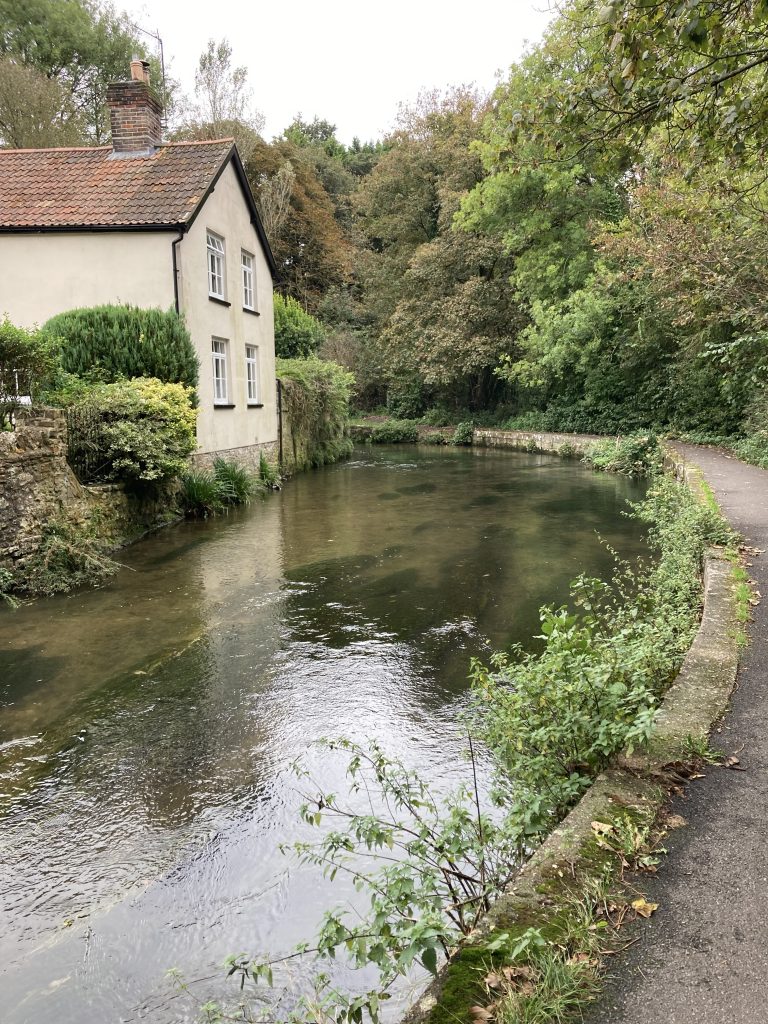
There were highly rated, good quality, and high-traffic restaurants in Dorchester, while the ones in Poundbury felt mostly vacant. Granted, I wasn’t there at dinner time, so maybe that’s not a fair assessment. I snapped a quick picture of a line out the door for this fish and chips place in Dorchester.
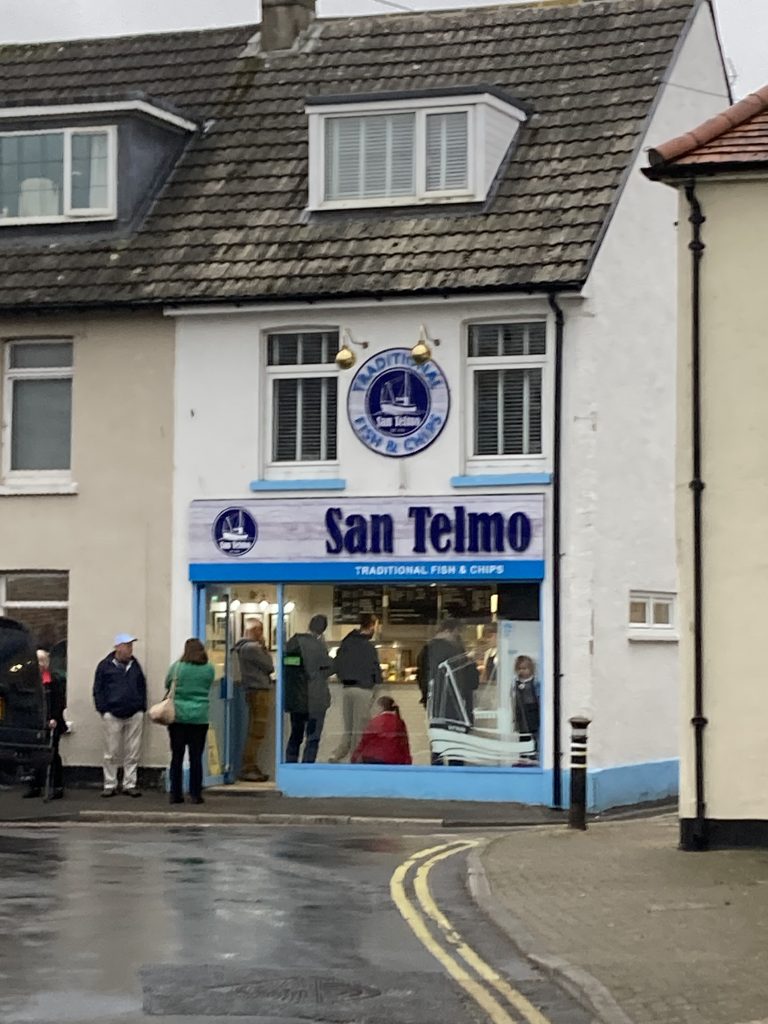
There were plenty of historical sites and culturally significant places in Dorchester, too. I wasn’t expecting old buildings in Poundbury like this one in Dorchester from 1616. But I wasn’t expecting a place frozen at some artificial time period, either.
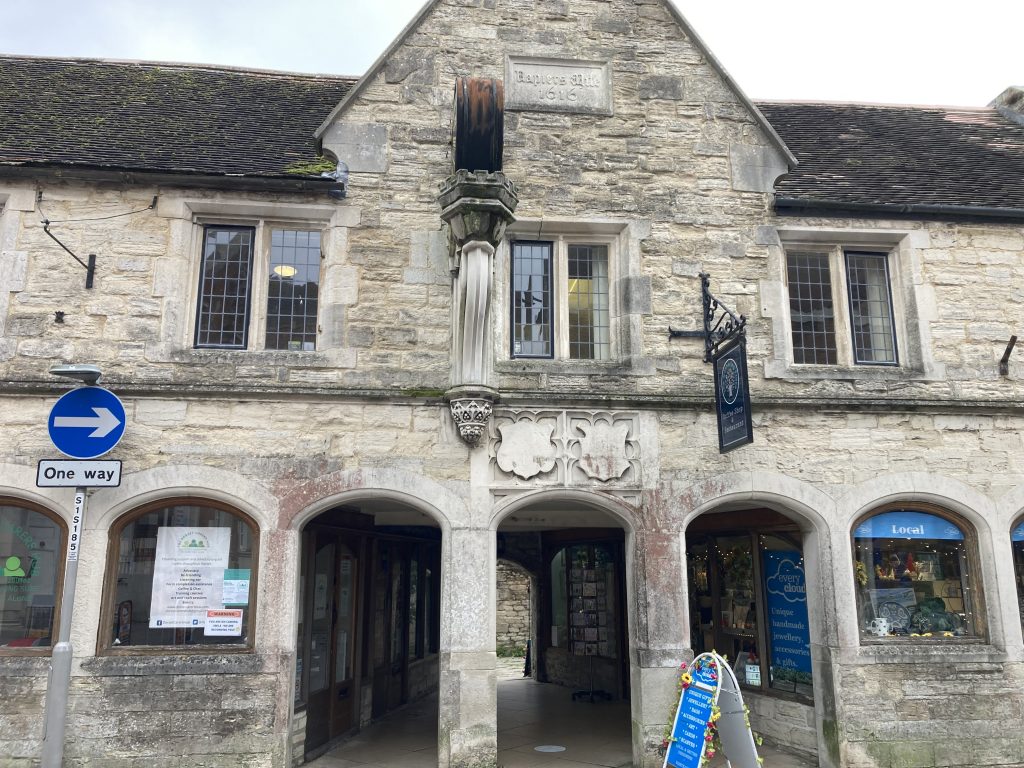
Numerous Roman coffins had been unearthed in Poundbury, but I didn’t see a museum there. Instead, they were displayed at a Roman ruin site in Dorchester. There were only a couple of statues of royals in Poundbury.
In addition to comparing Poundbury and Dorchester, I went to Edinburgh, Scotland next.
I felt so many things that Poundbury got wrong, Dorchester and Edinburgh got right.
In Edinburg, there were cobblestone roads, stream-side trails, farmers markets, many small shops clustered together, cultural and historic sites, and pedestrian-scaled roads off the main roads.
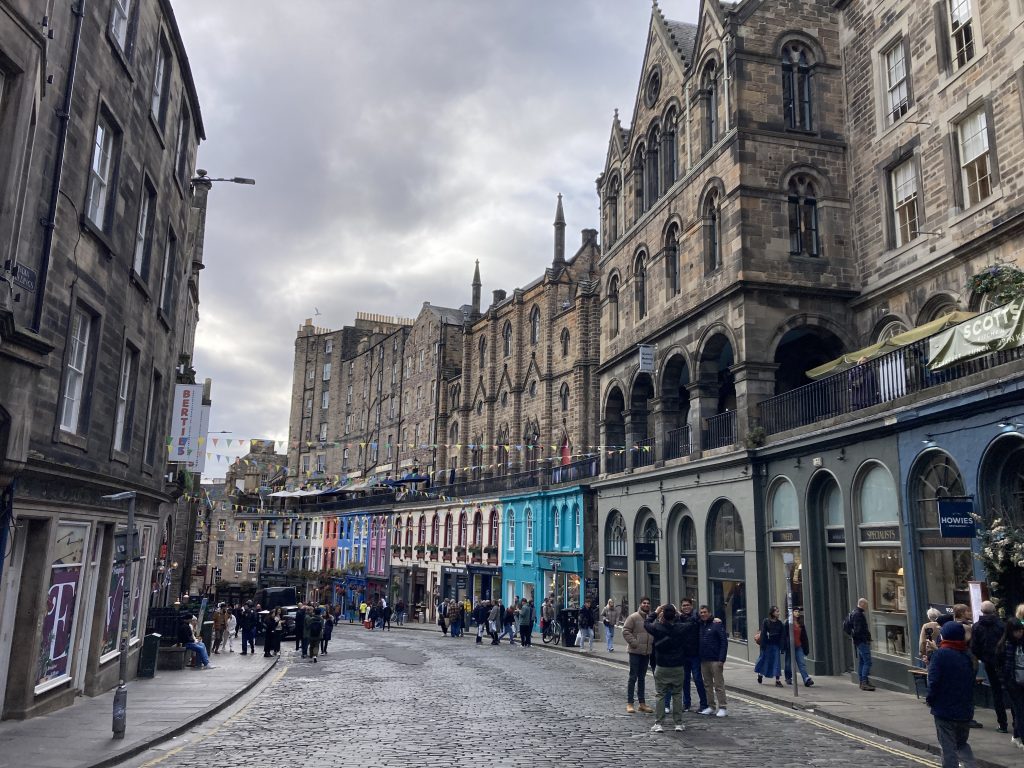
As a bookstore owner, it wasn’t lost on me that there were no bookstores in Poundbury. Dorchester has a few, and Edinburg had at least a dozen that I saw.
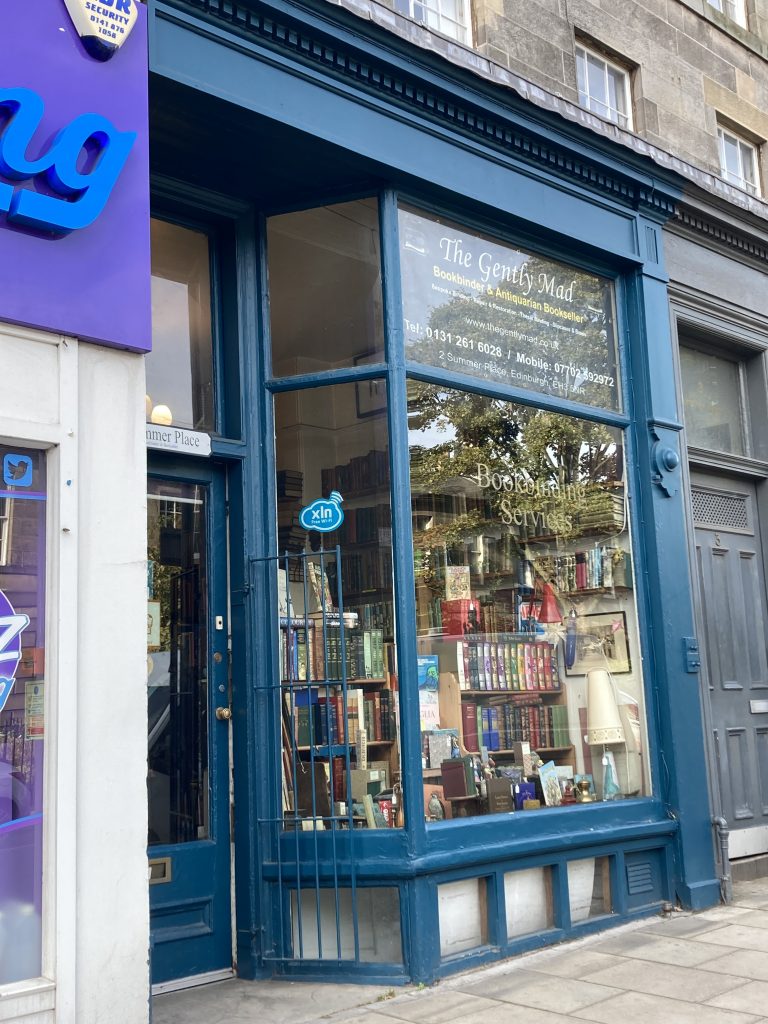
This is Carnival Row. Poundbury could have been filled with this.
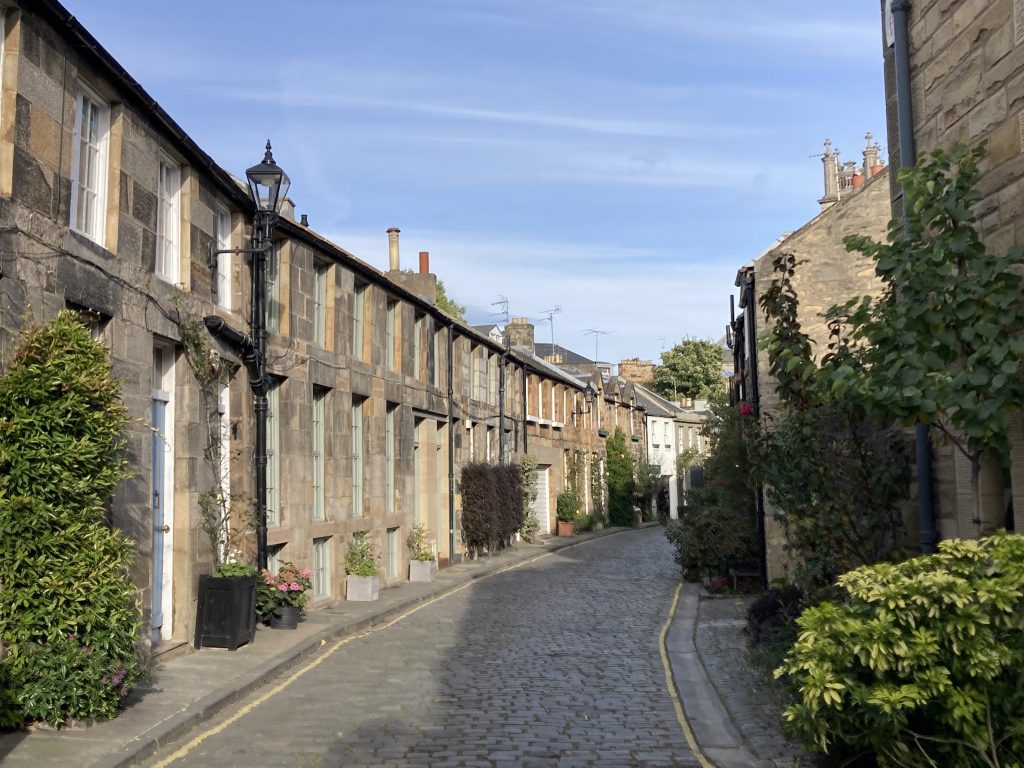
This is the kind of decoration I would expect to see when people actually live there. Even if it’s just plants, you can tell someone is there and cares about the place.
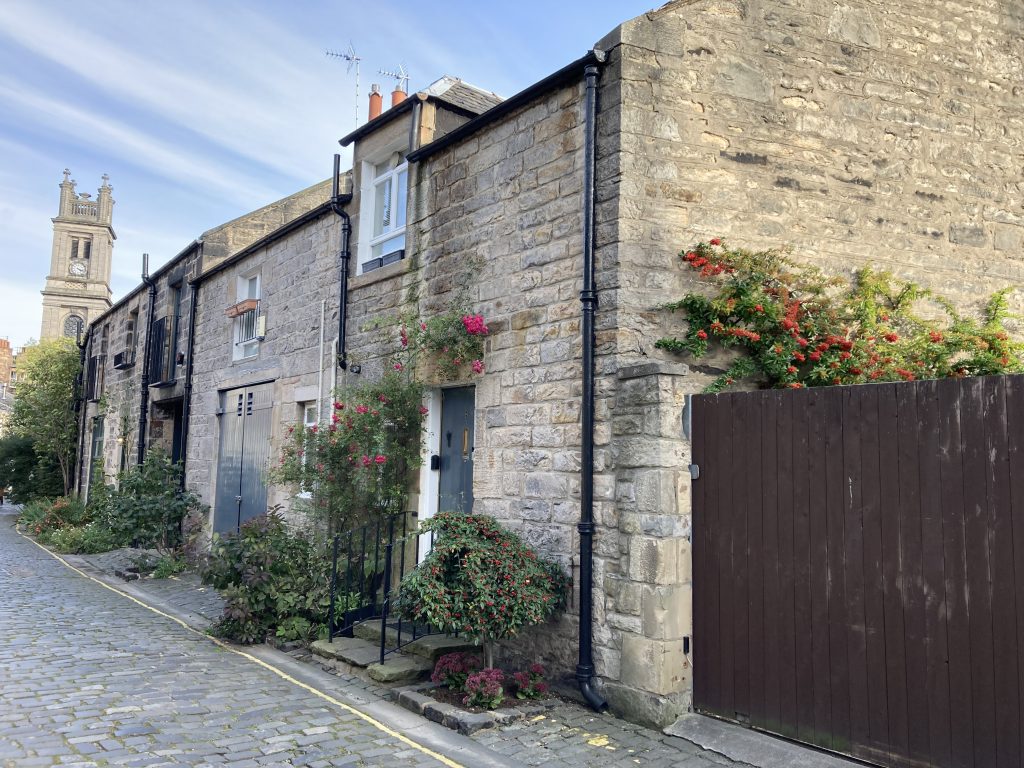
Here’s a more formal block of Edinburgh where you can still tell people live there and care about it.
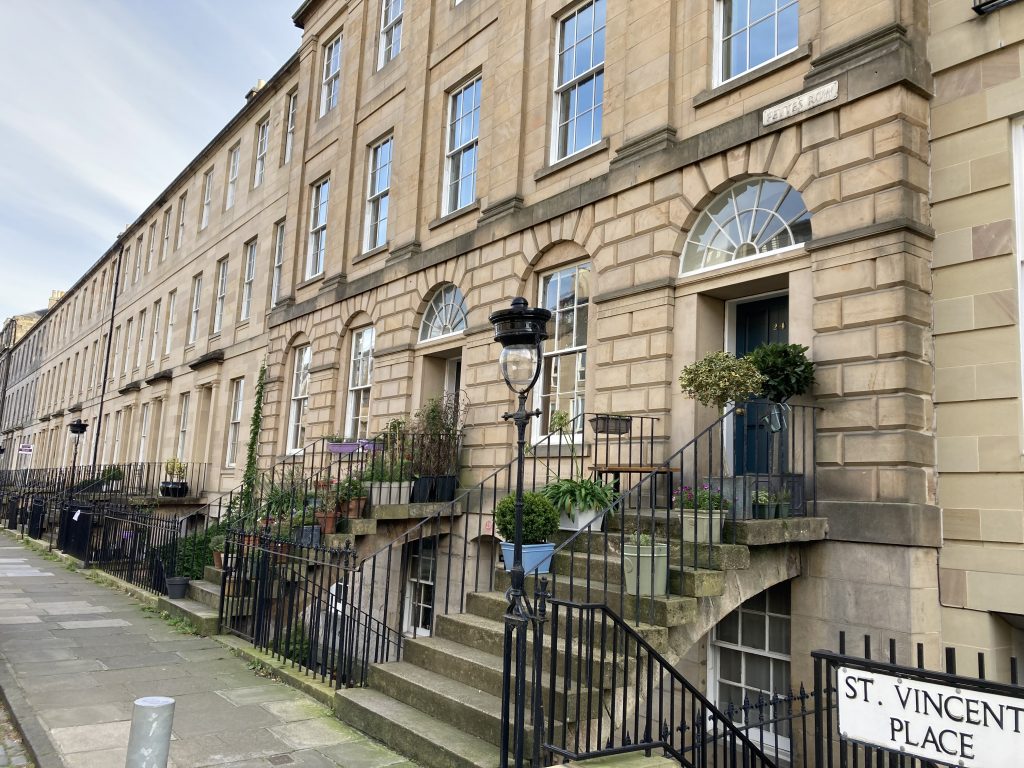
Overall, I was disappointed with Poundbury. There were so many things it could have gotten right, but it apparently decided not to. I thoroughly enjoyed Dorchester and Edinburgh.
I’ll close out with this sunset in Edinburgh. Every place needs a good place to watch a sunset.
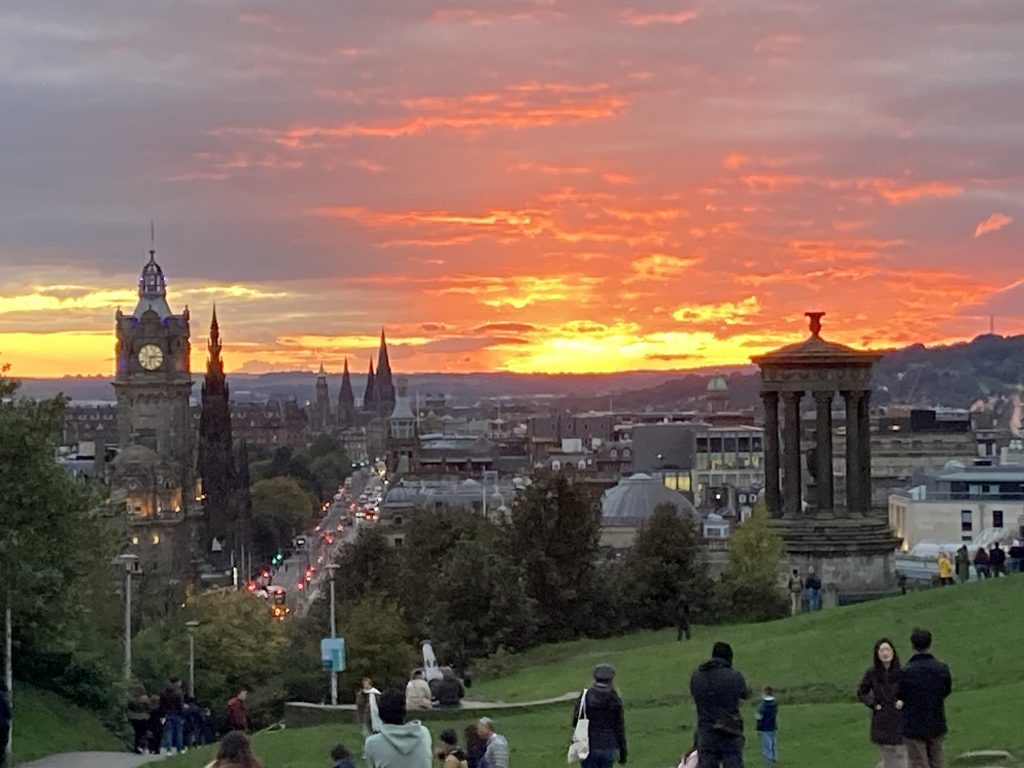
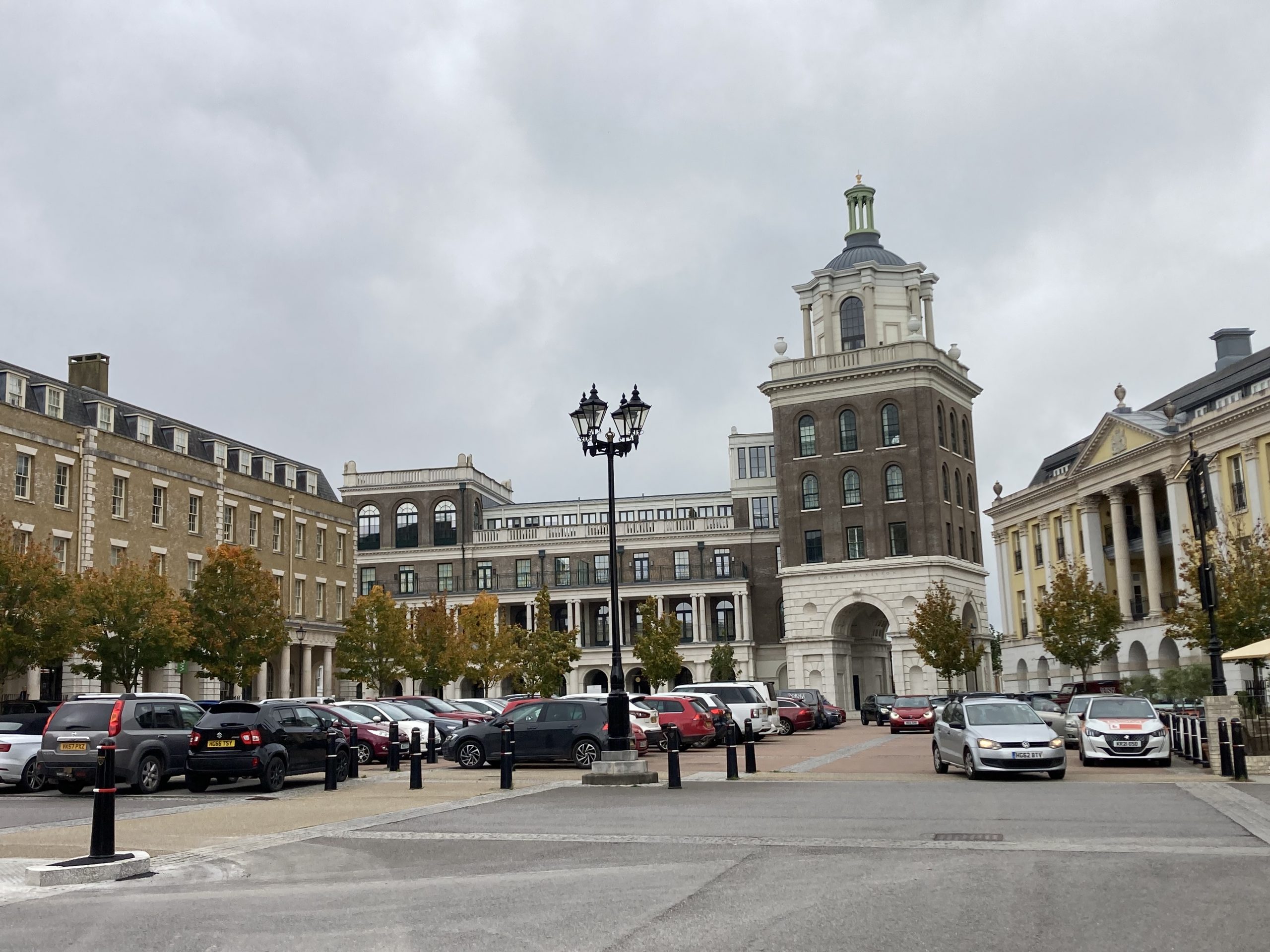
Leave a Reply